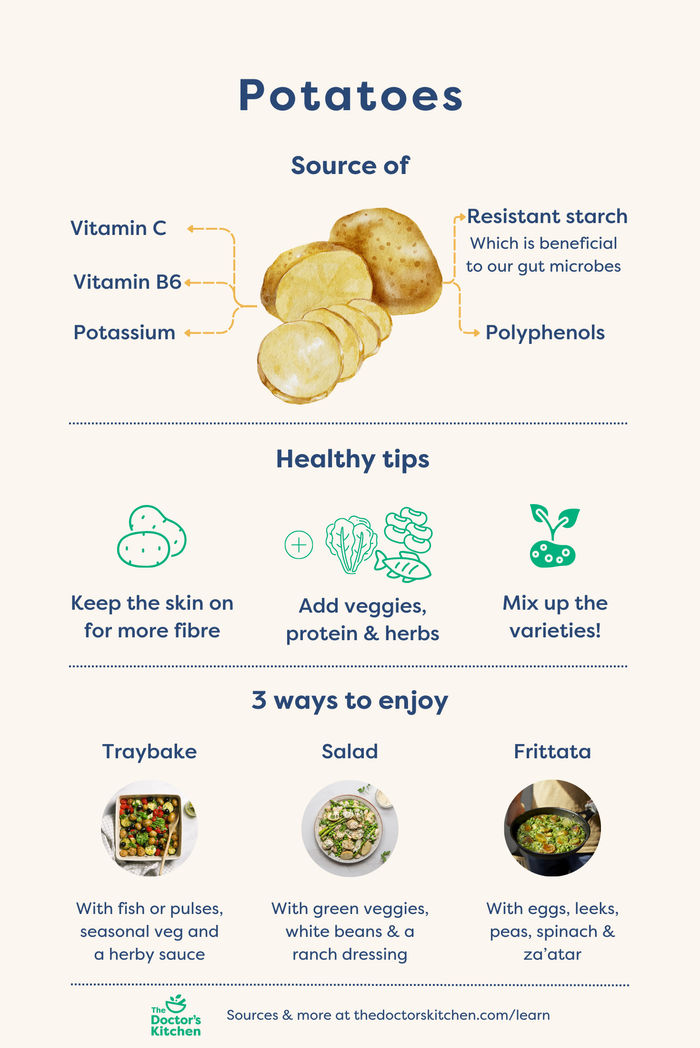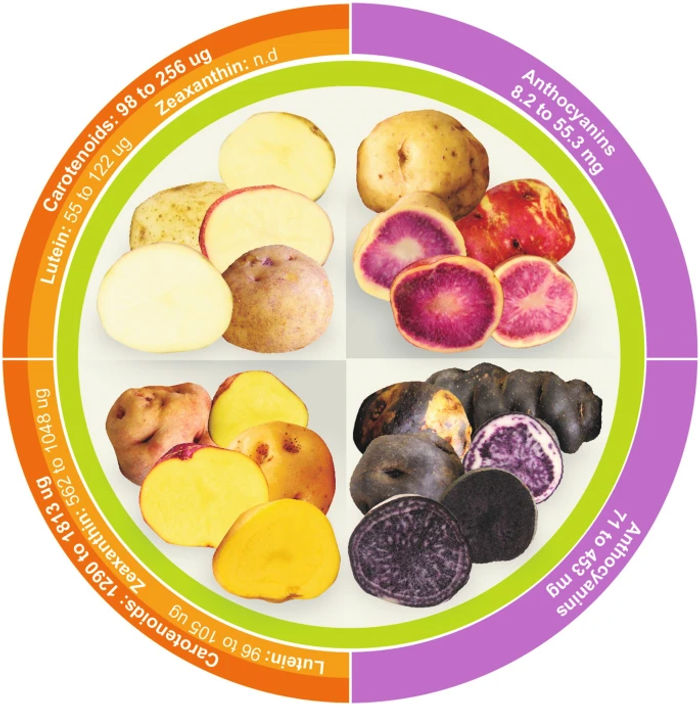Potatoes: Are they healthy?
2nd Feb 2024
Potatoes have been around for centuries and are used across various cuisines. But they sometimes suffer a bad reputation, especially with low-carb diets rising in popularity. Here's our take on the humble potato...
Key points
In a Nutshell

Plant Tales
Origin in South America: Potatoes originated in the Andes, in southern Peru and northern Bolivia, about 10,000 years ago. They became a staple food for the Incas who developed hundreds of varieties. To survive the harsh environment of the highlands, they freeze-dried potatoes into ‘chuño,’ a crucial legacy that has maintained food security for centuries.
From Andes to Europe: In the 16th century, Spanish colonisers introduced potatoes to Europe. Initially met with suspicion, the plant spread in an uneven way. By the 18th century, Europe caught the potato fever – it became a major crop in Ireland and various parts of Europe, especially Germany and the west of England.
5000+ Varieties! The few types of potatoes sold in most supermarkets are a tiny handful of the thousands of varieties that exist, showcasing a spectrum of colours, tastes and textures. Most are found in the Andes and never make it to market, traded among highland and lowland communities and given as gifts for special occasions.
Grow your own: While potatoes are available year-round, the main crop season hits in late summer. But now is the time to buy seed potatoes to enjoy the thrill of digging up fresh potatoes. They’re easy and enjoyable to cultivate in the ground, raised beds and containers. Check out this guide.
Health Benefits

Why the bad reputation? Potatoes are often misunderstood in nutrition and reduced to their carbohydrate content, which overshadows other nutrients. They are also associated with processed foods and unhealthy eating patterns, alongside refined grains, processed meats and high-sugar drinks. But they can be part of a healthy diet.
Source of:
- Vitamins C and B6
- Potassium: Potatoes provide one of the most concentrated sources of potassium, even more significant than your typical high-potassium foods like bananas.
- Iron: While their iron content is not particularly high, it’s easily absorbed compared to many other iron-rich vegetables, due to the high vitamin C content and low levels of compounds that hinder absorption.
- Dietary fibre – especially with the skin on.
- Polyphenols – most notably carotenoids and phenolic acids that show many health-promoting properties.
A quality carbohydrate: Potatoes contain resistant starch – a type of fibre that is fermented by the gut microbes, producing short-chain fatty acids and promoting the growth of beneficial colonic bacteria. They’re a good alternative to refined grains such as white rice, pasta and white bread to improve diet quality.
It might be down to how we eat them. Recent evidence suggests that total potato consumption is not related to risk for many chronic diseases. When boiled potatoes were separated from mashed potatoes, fries and crisps, they were no longer associated with a higher risk of diabetes. (Schwingshackl et al. Eur J Nutr.2019)
5 healthy tips
- Keep the skin: It contains about half of the total dietary fibre.
- Cook them yourself: Bake, boil, or steam whole potatoes into stews and baked dishes.
- Add veggies and protein: Pair potatoes with foods high in protein and fibre to slow down the release of glucose into the bloodstream. Add lentils, beans, peas, fish or eggs, fresh herbs and seasonal vegetables like leafy greens.
- Mix it up! Yellow-fleshed potatoes carry more carotenoids, while purple potatoes haver higher anthocyanin levels.
- Diversify your carbs: Switch it up throughout the week with whole grains such as buckwheat, rice, quinoa, millet and barley.
Our favourite ways to enjoy potatoes
- Traybakes with fish or beans, seasonal veggies and a herby sauce.
- Baked: Sliced or mashed and layered with vegetables and a lentil or tempeh sauce.
- Breakfast skillets & frittata with eggs, bell peppers, onions, greens and spices like za’atar.
Recipes
- Creamy Aubergine, Potato and Tempeh Bake
- New Potato and Asparagus Salad with Ranch Dressing
- Jersey Royal Tray Bake with Mediterranean Herbs
- Green Fisherman’s Stew
Sources
History: Britannica | RHS | Earle et al. Feeding the People: The Politics of the Potato. Cambridge University Press. 2020 | Wellcome Collection
Health: Beals et al. Nutrition and Health. Am. J. Potato Res. 2019 | Burgos et al. The Potato Crop. Springer, Cham. 2020 | Schwingshackl et al. Eur J Nutr. 2019 | Fleming et al. Advances in Nutrition. 2023
- Access over 800 research backed recipes
- Personalise food for your unique health needs
